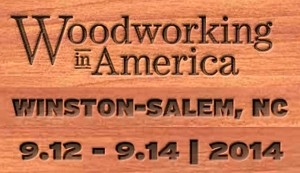We may receive a commission when you use our affiliate links. However, this does not impact our recommendations.
 If you’ve been around Popular Woodworking Magazine recently, you know Wilbur Pan. You also may not think that he is new on the lectern at Woodworking in America (WIA) because he’s been to most of the conferences, but this is the first year he’s been asked to present.
If you’ve been around Popular Woodworking Magazine recently, you know Wilbur Pan. You also may not think that he is new on the lectern at Woodworking in America (WIA) because he’s been to most of the conferences, but this is the first year he’s been asked to present.
In the pages of PWM, Wilbur has contributed in many different columns and had a couple of features, too. In fact, he’s written something in PWM in every year beginning in 2011. In the April 2011 issue (#189) in our Arts & Mysteries column, he and Bob Rozaieski discussed how Eastern and Western tools might not be as different as you think.
 In the October 2012 issue (#199), Wilbur wrote the End Grain column “It Comes Down to the Cut.” In it, he talks about his thoughts on woodworking and the art of growing up with Zen. Read the column here.
In the October 2012 issue (#199), Wilbur wrote the End Grain column “It Comes Down to the Cut.” In it, he talks about his thoughts on woodworking and the art of growing up with Zen. Read the column here.
In 2013, Wilbur presented his first feature-well article discussing Japanese Chisels in the February issue (#202). In the article he discusses everything there is to know from how these chisels undergo a forge-welding process to how the handles are attached. Wilbur also dispels any thoughts that Japaneses chisels are for use only in softwoods. It’s great information on a topic that is ever-growing in today’s woodworking. Click here to see the issue at shopwoodworking.com.
Wilbur’s latest article was also a coordinated effort with Kees van der Heiden in the April 2014 issue (#210); This was the “Chipbreaker: Theory & Use” article that introduced readers to the now famous Kato and Kawai video showing the effects of a properly set chipbreaker. If you click through the link, you come to Wilbur’s giant Cypress blog, which is also loaded with great woodworking information.
 At WIA, Wilbur stays true to his topic of choice – Japanese hand tools. In his first class, he teaches how and why Japanese chisels and saws are made the way that they are, what makes them different from western tools, the surprising similarities between Japanese chisels and saws and their western counterparts, and how to use them to great advantage in your shop. The class is held only one time during the conference (Friday afternoon from 1:00 – 3:00), so make sure you schedule your time appropriately.
At WIA, Wilbur stays true to his topic of choice – Japanese hand tools. In his first class, he teaches how and why Japanese chisels and saws are made the way that they are, what makes them different from western tools, the surprising similarities between Japanese chisels and saws and their western counterparts, and how to use them to great advantage in your shop. The class is held only one time during the conference (Friday afternoon from 1:00 – 3:00), so make sure you schedule your time appropriately.
On Saturday from 2:00 – 4:00 in the afternoon, Wilbur moves to Japanese planes. In the session he teaches how Japanese planes are made and how they work, how to set up and use a Japanese plane, and why you should consider having one in your shop. Again, this is a one-time presentation, so get things scheduled to make sure you’re there.
If you have yet to register for the conference, what’s holding you back. The 2014 Woodworking in America conference promises to be even better than years past. Click here to get involved.
On a side note, if you’re in the New York City area – Brooklyn to be exact – on September 6, 2014, you can learn more from Wilbur Pan at Mokuchi Studio where he’ll present on Japanese and Western planes. At the event (more information here), there will be a Kezurou-Kia (planning contest) to see who can pull off the thinnest and best shaving from a premium Port Orford cedar or Alaskan Yellow cedar. If you haven’t seen this done in person, you really should. It’s amazing.
Also at the event and presenting are Jim Blauvelt and Yann Giguere of Mokuchi Woodworking. If you make it there, tell Wilbur the editors at PWM send their regards, and that he should save the best for Woodworking in America 2014.
Here are some supplies and tools we find essential in our everyday work around the shop. We may receive a commission from sales referred by our links; however, we have carefully selected these products for their usefulness and quality.








